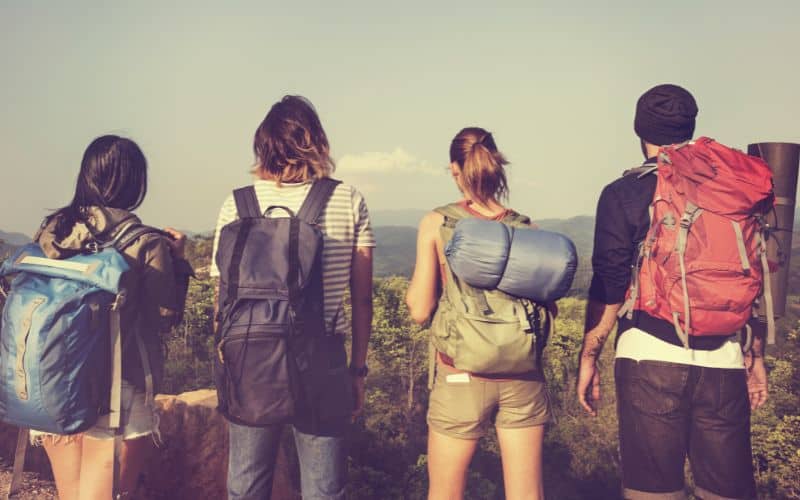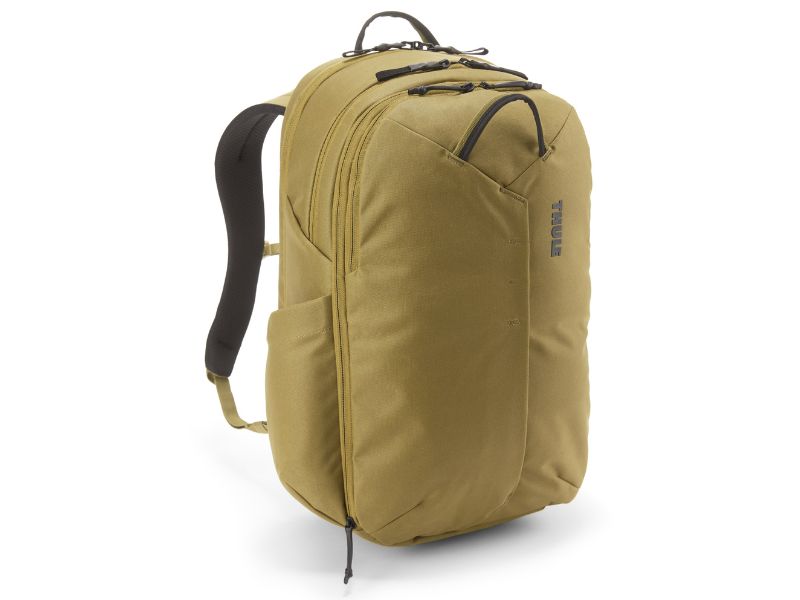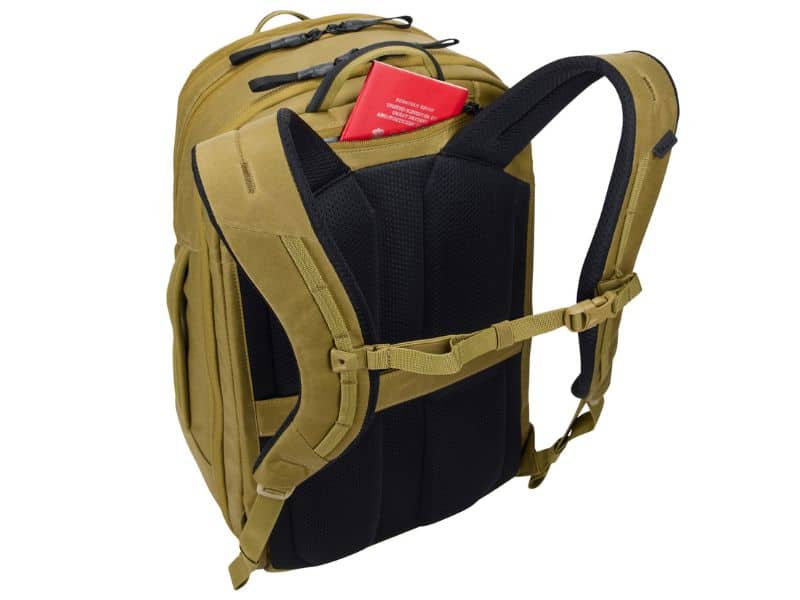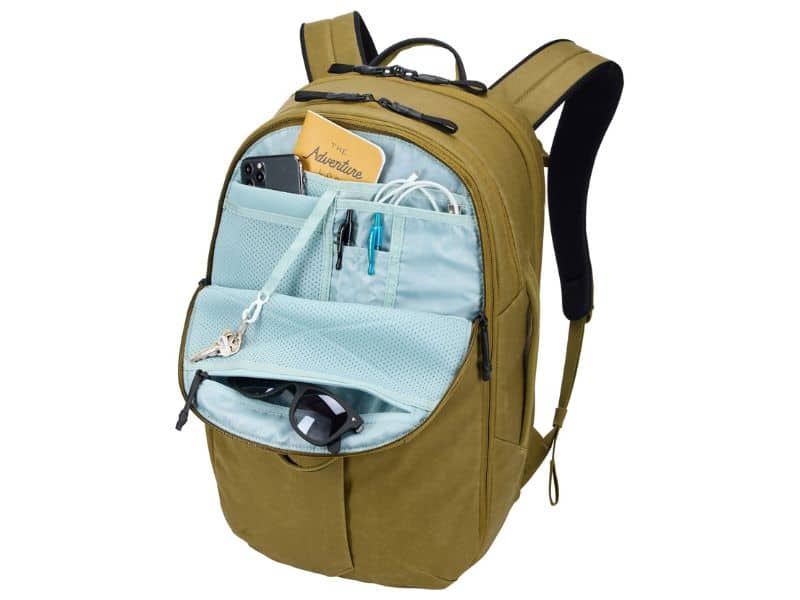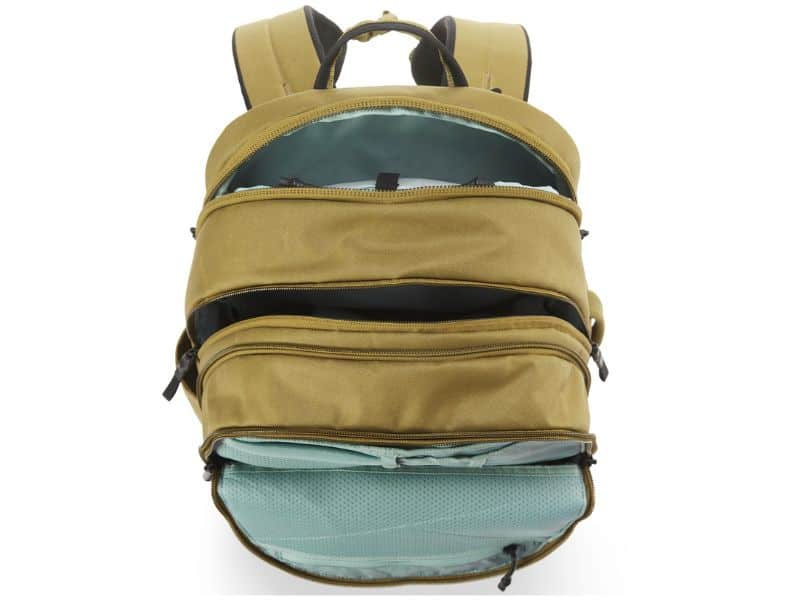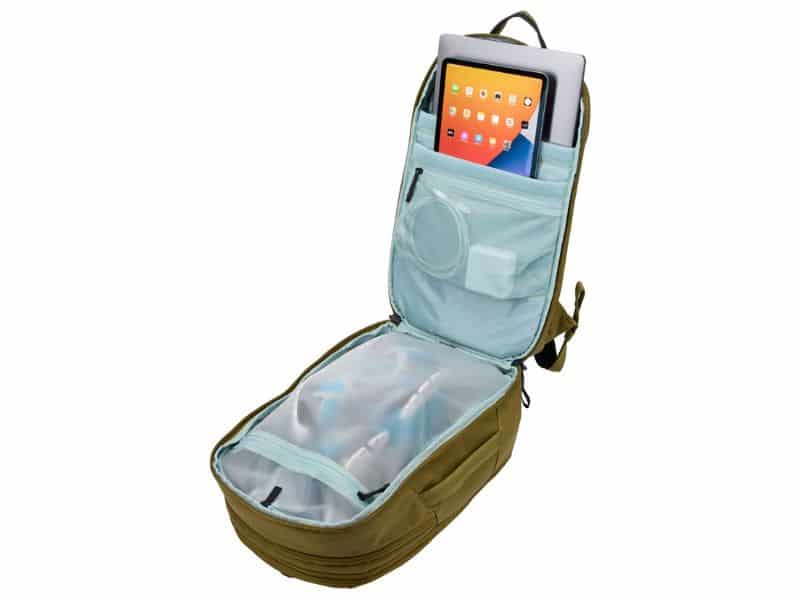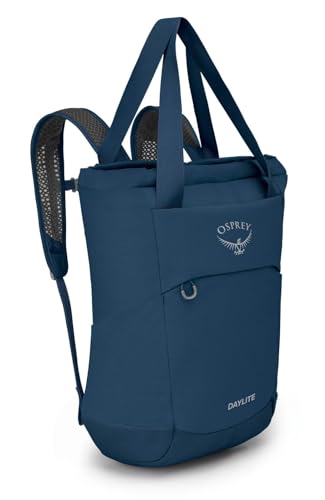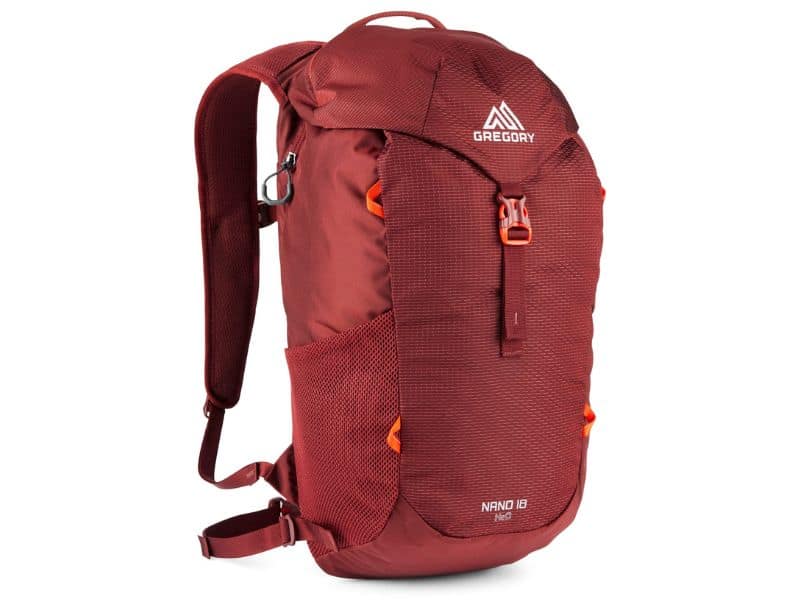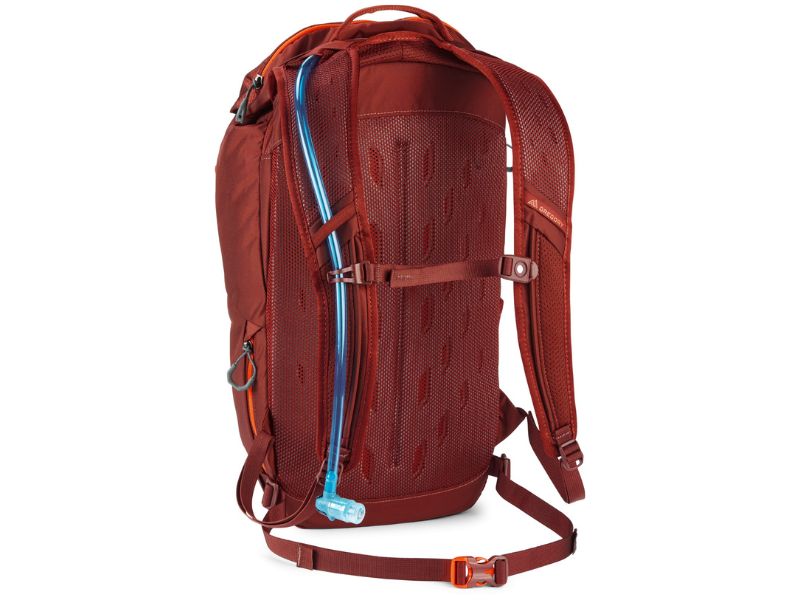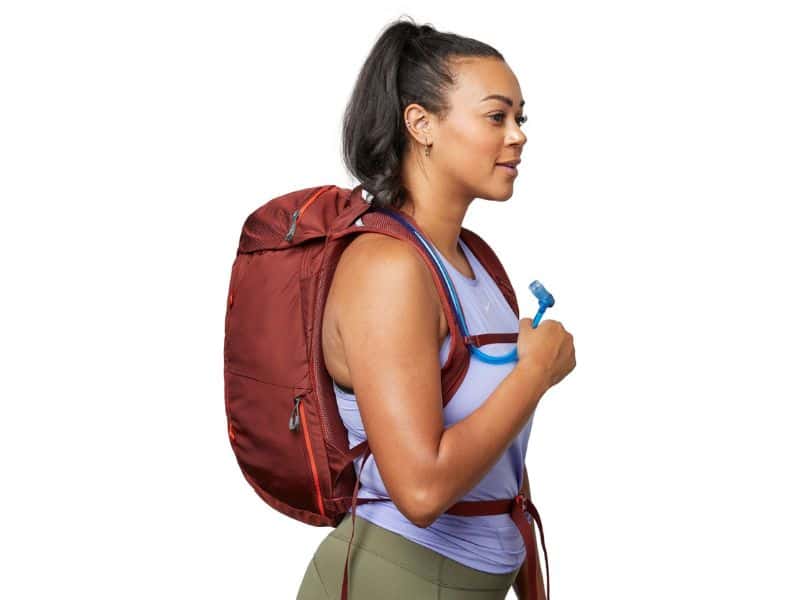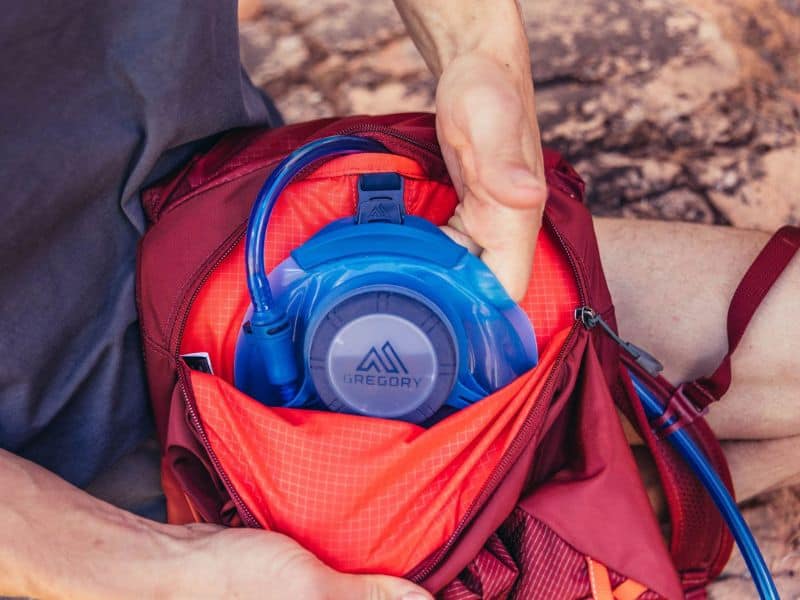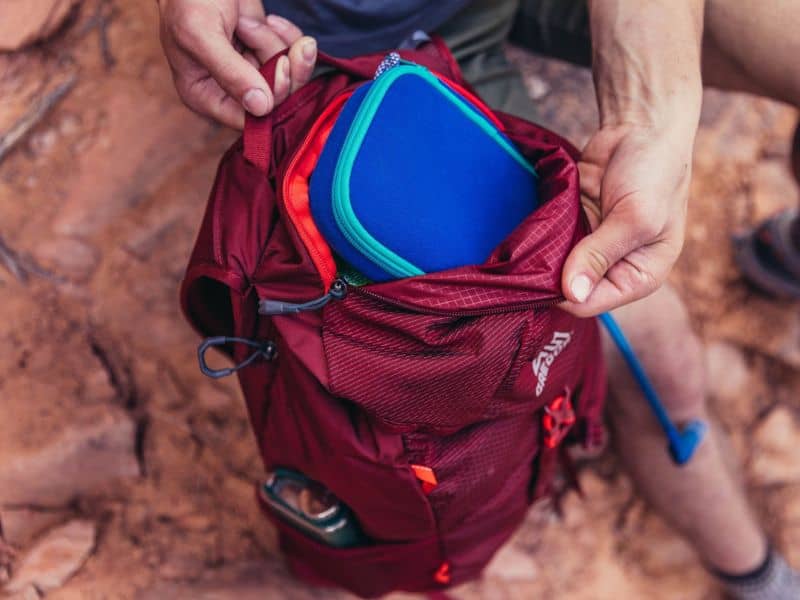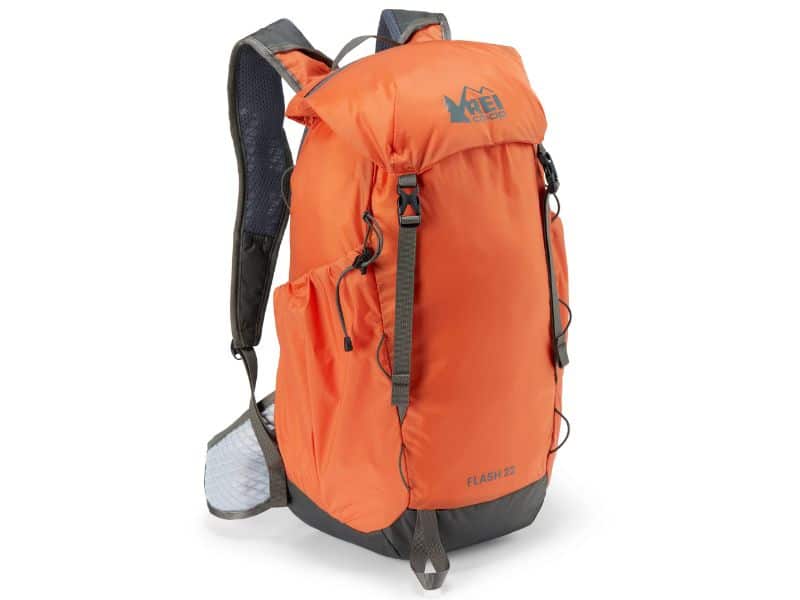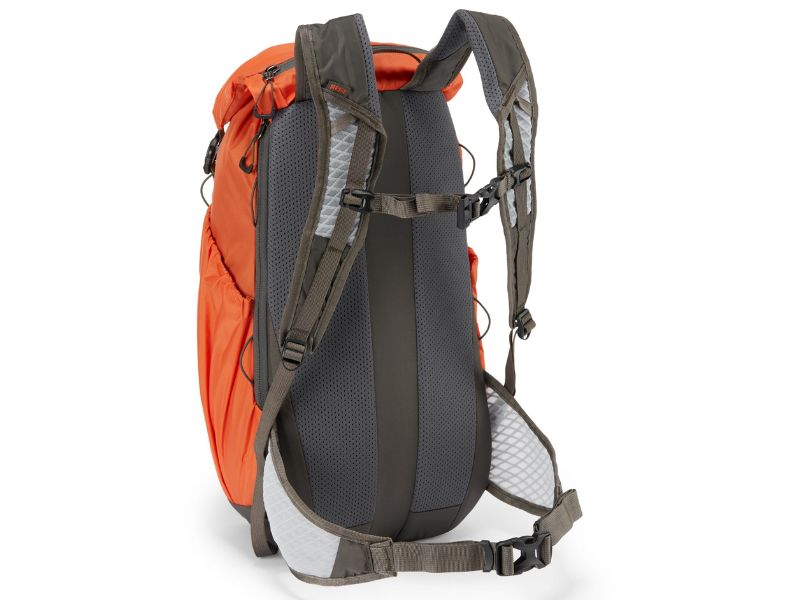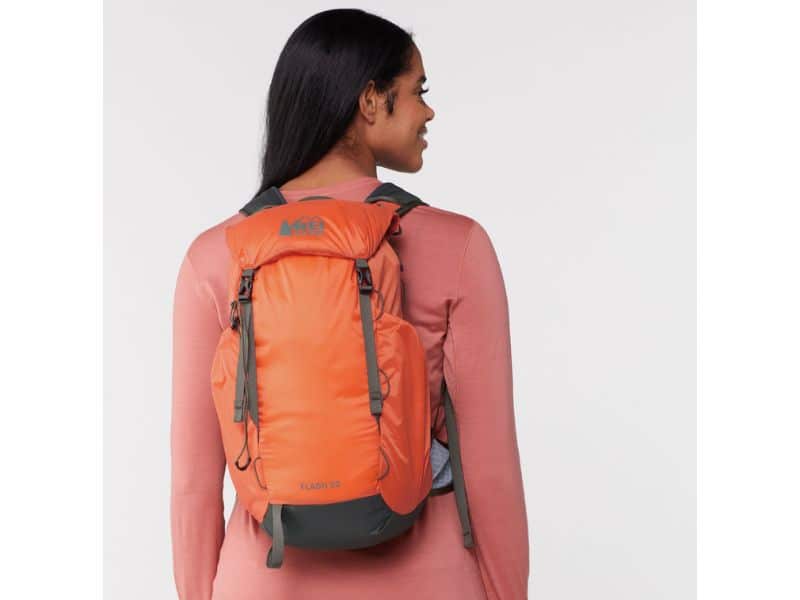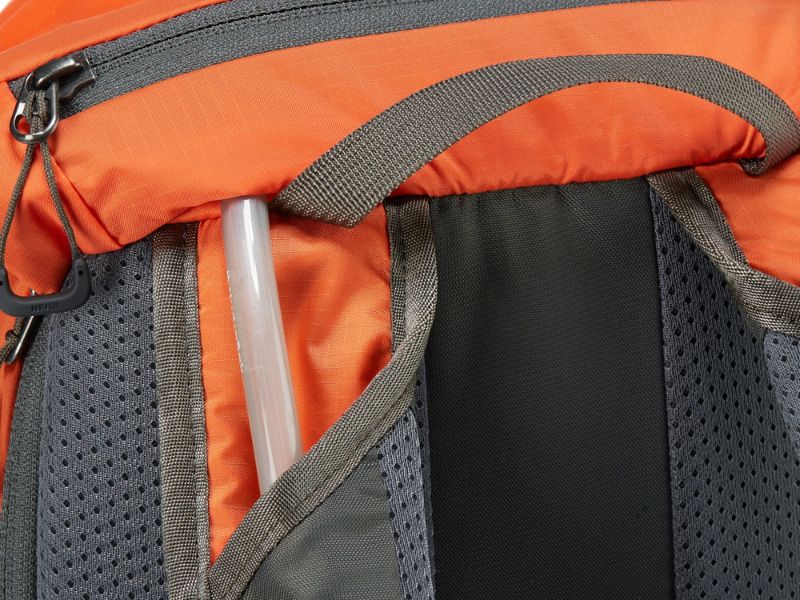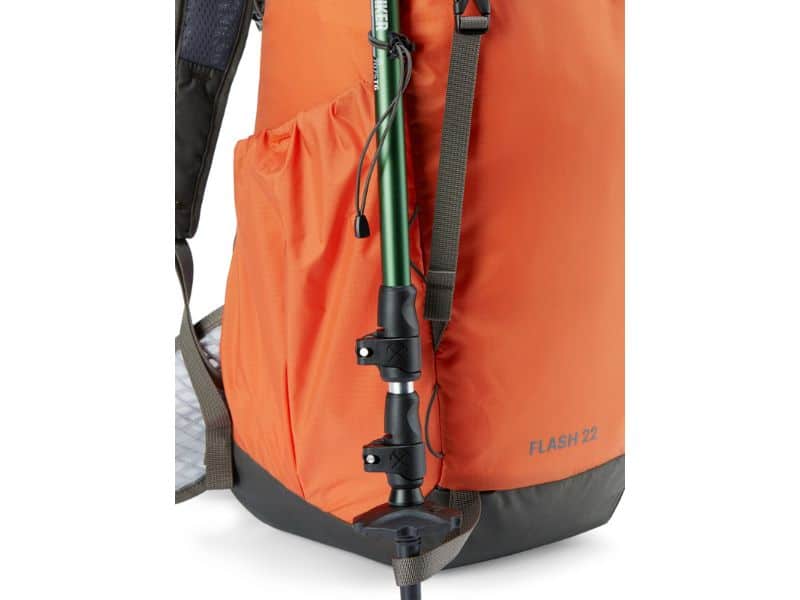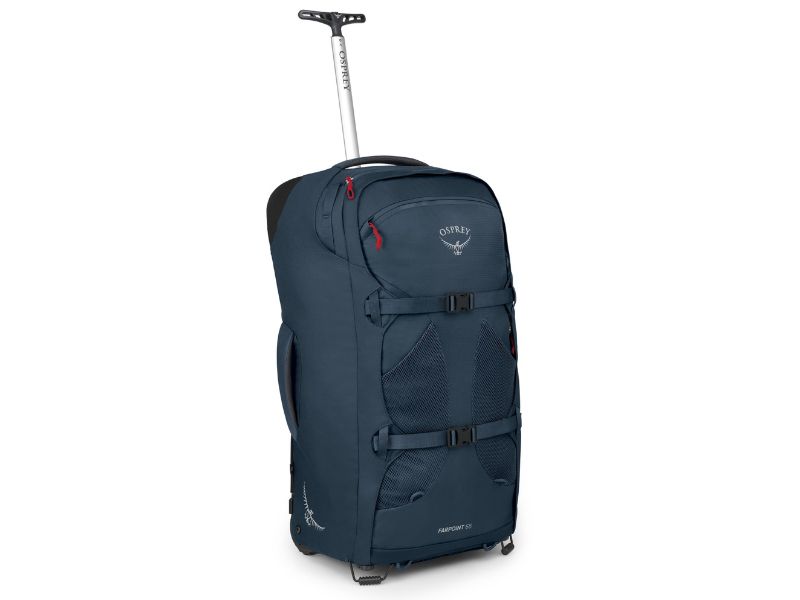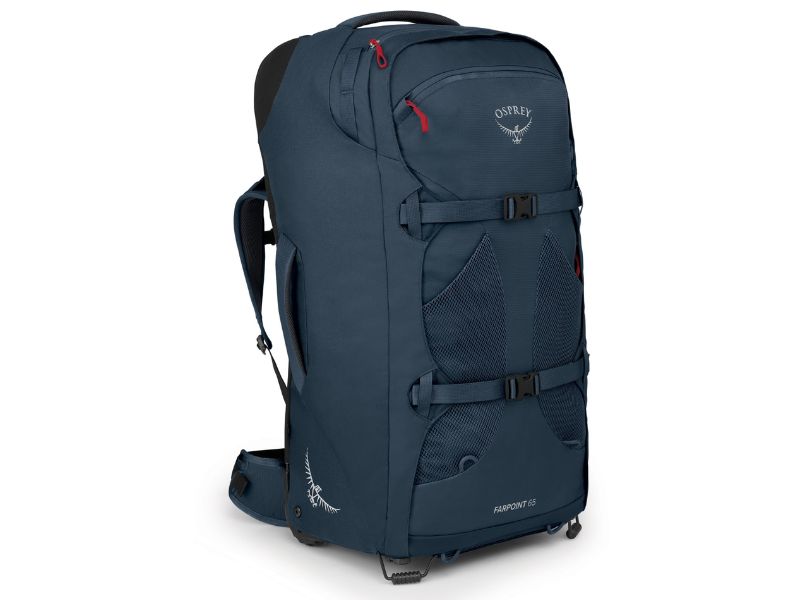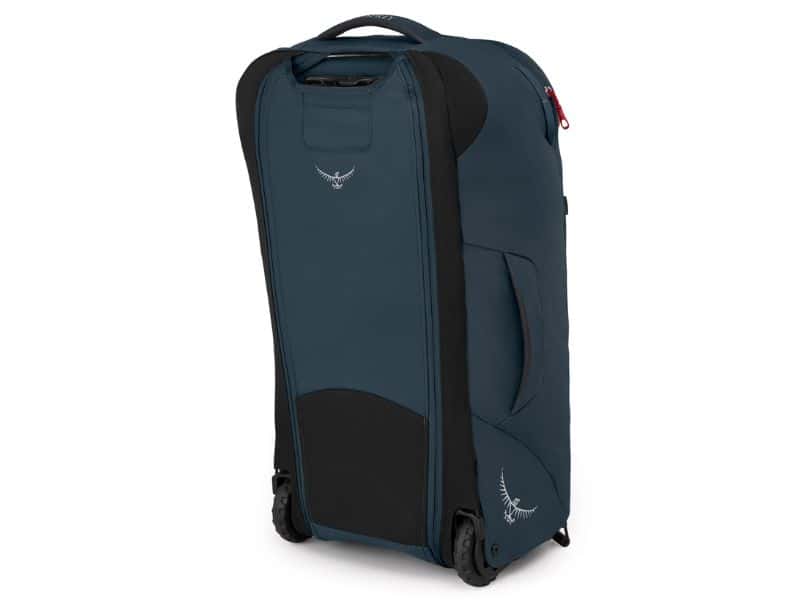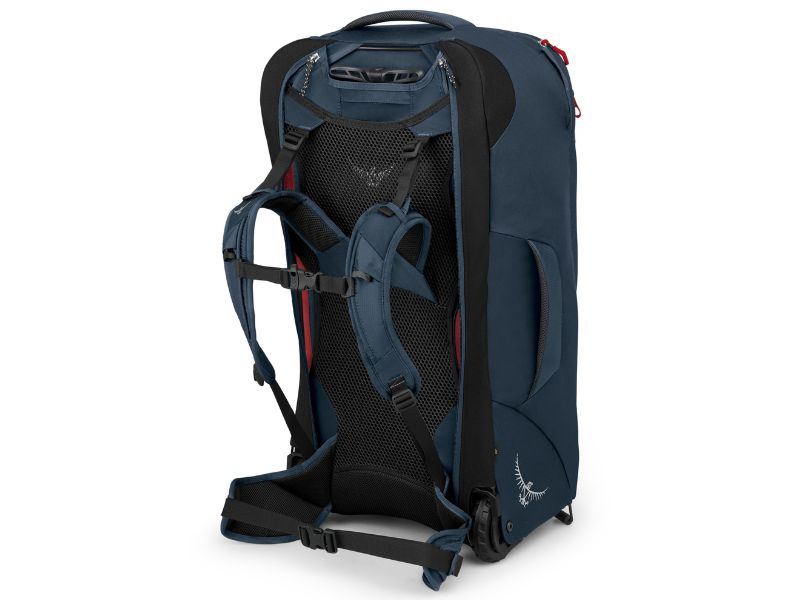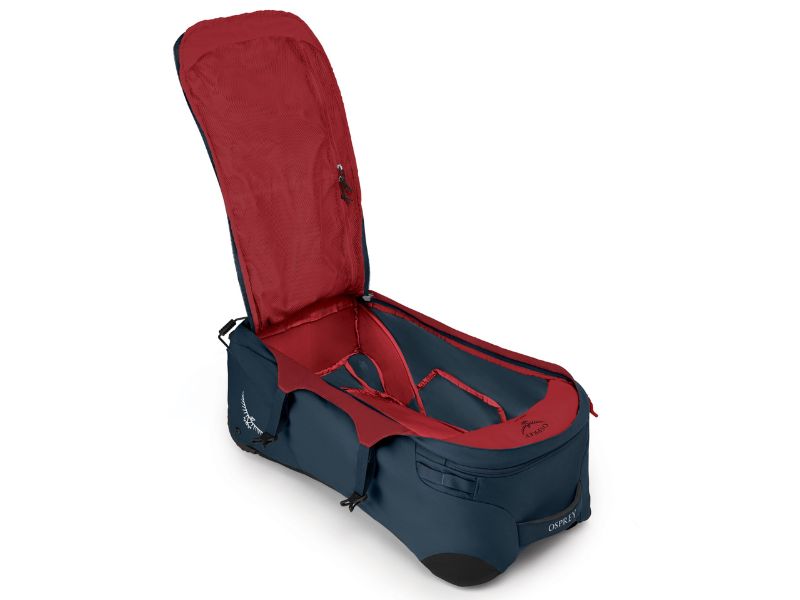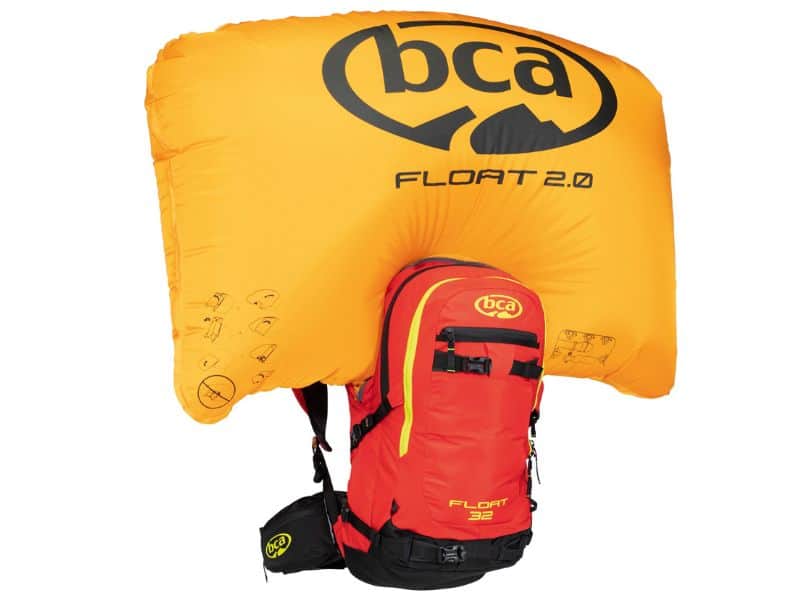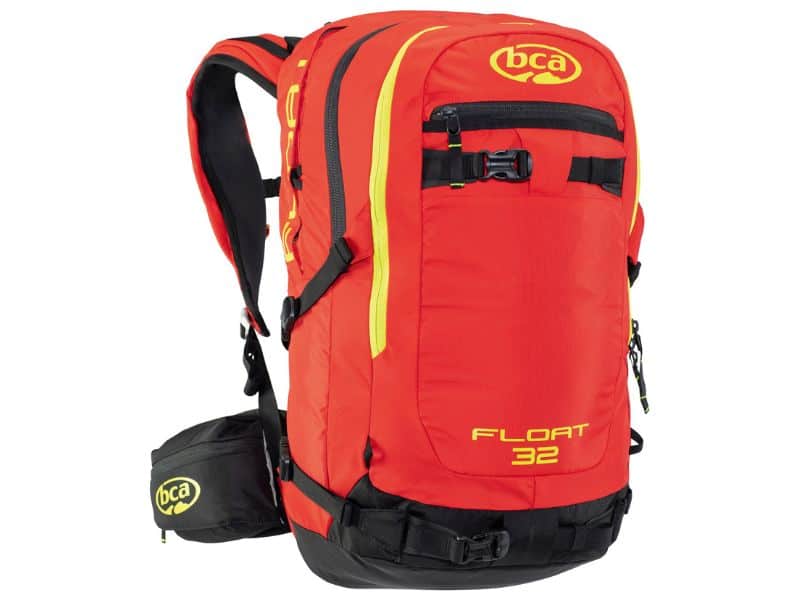Looking for a new backpack but not sure which one fits your needs? There are so many kinds on the market today that it’s hard to choose only one!
From your basic daypack to avalanche airbags, this list of different pack types will help you pick the right one for you.
In this guide, we cover everything you need to know about different kinds of backpacks, including descriptions of each style, what to use each type for, and more!
Table of Contents
- 1. Basic Daypack
- 2. Rucksack
- 3. Anti-Theft Backpack
- 4. Laptop Backpacks
- 5. Duffel Backpacks
- 6. Tactical/Military Backpacks
- 7. Hunting Backpacks
- 8. Tote Backpacks
- 9. Drawstring Backpacks
- 10. Mini Backpacks
- 11. Hydration Backpacks
- 12. Biking Backpacks
- 13. Framed Hiking Backpacks
- 14. Frameless Hiking Backpack
- 15. Backpacking Backpacks
- 16. Wheeled Backpack
- 17. Carry-On Backpack
- 18. Avalanche Airbag Backpack
- 19. Dog-Carrier Backpack
- 20. Snowsport Packs
- 21. Dry Bag Backpack
- 22. Sling/Messenger Bag Backpacks
- 23. Leather Backpacks
- Types of Backpacks: Wrapping Up!
1. Basic Daypack
A basic daypack is similar to the regular school bags children use to carry around their books at school. It’s a small bag with two shoulder straps which you wear on your back.
Daypacks are frameless backpacks made from fabric with shoulder straps, a handle on top, a main zippered compartment accessed from the top, and small front or side pockets. These types of bags are on the smaller side, with a capacity ranging from around 10 to 30 liters.
Classic daypacks have a minimalist design without any frills, but the lack of extra features keeps them lightweight and practical. A basic daypack works well for work, travel, school, and daily life.
Our favorite daypack for men is the Osprey Talon 22 and its counterpart for women the Tempest 20.
2. Rucksack
Rucksacks are a more durable version of daypacks with a slightly different design. Instead of a zipper, the top-loading main compartment usually features a snap, buckle, or drawstring closure, or sometimes no closure at all.
A flap covers the opening and is secured in place by one or two buckles or magnetic straps attached to the front of the bag. Rucksacks are typically made from waxed canvas or another long-lasting textile, like leather.
This type of rugged pack usually has a smaller capacity than regular backpacks due to its design. Rucksacks range in size from 15 to 40 liters, but many provide large external pockets to make up for less internal space.
Our favorite rucksack is the Fjallraven Greenland.
3. Anti-Theft Backpack
Anti-theft packs are similar to regular daypacks, but with theft-resistant features.
Although it’s not noticeable, these bags are made from anti-slash materials to prevent thieves from cutting open the pack.
The zippers on these packs may appear to be non-existent, but upon closer inspection, you’ll find them hidden under flaps. Most of the zipper pulls have clasps to secure the lockable zippers in the closed position.
These packs come in a variety of sizes, ranging from mini backpacks for daily use to larger 45-liter travel bags with laptop sleeves. Many anti-theft backpacks have additional security features including combination locks, locking cables, compression straps, and RFID-blocking pockets.
Our favorite? The Pacsafe MetroSafe.
4. Laptop Backpacks
A laptop compartment is the main difference between an everyday backpack and a laptop backpack. These kinds of bags have a laptop sleeve or pocket to store your computer while you’re traveling or commuting.
They come in a variety of materials and designs, and usually have a capacity of 15 to 40 liters. Most of these packs feature a large top handle, pockets for laptop accessories, and either an internal or external padded laptop compartment.
One of the important things to keep in mind when purchasing a laptop bag is the size of your laptop. Be sure to get a bag with a laptop sleeve the same as or larger than your laptop’s size. The laptop storage area on these packs ranges in size from 11 to 17 inches.
Our top pick is the Thule Aion.
5. Duffel Backpacks
A duffel bag backpack is a duffel bag with shoulder straps that transform it into a traditional backpack and make it easier to carry. It’s a large, cylindrical bag with either an opening on the top with a drawstring closure or a zipper along the length of the bag.
Duffel packs are made with fabric and collapse down for easy storage. These are some of the larger bags on this list, with capacities ranging from 30 to over 120 liters. They’re great for use as gym bags, sports bags, and travel.
Our favorite duffel? The Patagonia Black Hole.
6. Tactical/Military Backpacks
Military packs, also known as tactical backpacks, were originally designed for use by the military and law enforcement to organize, store, and transport gear. They are sturdy, water-resistant, comfortable, and practical.
They have a unique design with MOLLE straps and webbing lining the front of the backpack where you can clip items to keep them handy.
Tactical packs come in military-friendly colors like black, brown, green, and army camouflage. They range in size from small 5-liter bags for essentials to 40-liter packs to carry enough gear for a few days.
Our favorite tactical backpack is the Mystery Ranch 2-Day Assault Pack.
7. Hunting Backpacks
Hunting packs are designed to carry the specific gear you need for what you hunt and the supplies needed for your trip. It looks like a hybrid between a military pack and a hiking daypack.
This style of backpack usually comes in water-resistant fabric with a hunting camouflage print or a neutral color to help the hunter remain unseen. They are made in a variety of sizes and are comfortable enough to wear for hours. With padded backs and shoulder straps, chest straps, and hip straps to evenly distribute the weight.
Most hunting packs have space for a hydration pack and come with plenty of organizational compartments for survival gear.
Our top pick is the Badlands Diablo Dos.
8. Tote Backpacks
A tote backpack is a classic tote bag with a zippered closure and a pair of shoulder straps that convert it into a backpack.
A standard tote bag is designed with a deep main compartment with an opening at the top and a pair of long carry handles on each side of the bag. Outdoor totes are similar in style but have chunkier straps that you wear over both shoulders as opposed to just one.
Most feature pockets on the inside and outside of the bag for additional storage and organization. Tote packs come in an endless variety of colors and textiles, and some have laptop sleeves. They are made for daily use and range in size from 15 to 35 liters.
Like what you see? Check out the Osprey Daylite Tote.
9. Drawstring Backpacks
Also known as cinch sacks, drawstring packs are small, fabric bags with drawstrings you can loop your arms through to wear like a backpack.
They are ultra lightweight and fold down small, making them great for holding essentials during travel, carrying stuff to the gym, or keeping on hand when you need an extra bag. This minimalist backpack’s capacity is on the smaller side, ranging from 10 to 25 liters.
Our favorite is the BeeGreen 20L.
10. Mini Backpacks
A mini backpack is a much more fashionable, tiny version of a backpack. It’s small, lightweight, and serves as an easy-to-carry alternative to a purse.
They are usually top-loading with either a zipper or flap closure. Mini packs come in an endless assortment of colors and materials to match your style. They are the smallest bags on this list, ranging in capacity from 5 to 15 liters. They work well for toting your phone, wallet, and a few other items around town.
Our top pick is The North Face Borealis.
11. Hydration Backpacks
These packs help you stay hydrated while engaging in outdoor activities, like hiking and biking. Hydration packs are small bags with shoulder straps designed to carry a water reservoir. They provide hands-free hydration via a drinking tube so you don’t have to stop what you’re doing to drink water.
Hydration packs are usually made with water-resistant fabric, top-loading with a zipper closure, and have a capacity of 3 to 10 liters. They are sold with hydration bladders which can hold from 1 to 3 liters of water. Some of these packs come with additional internal storage space or external pockets to carry a few extra items.
Our favorite is the Gregory Nano 18.
12. Biking Backpacks
Cycling enthusiasts use this type of backpack to carry their gear while riding, especially in rainy weather.
Biking packs are waterproof, top-loading bags with daisy-chain loops across the front to organize your cycling tools and gear. Most of them are designed with a roll-top closure instead of a zipper to prevent water from getting inside the pack.
This backpack style can come with several features, including an attachment point for a helmet, a built-in lock holder, LED lights, reflective webbing, a vented back panel, a hydration bladder sleeve, and a laptop sleeve. These bags are lightweight and range in capacity from 10 to 30 liters.
Our favorite? The Dakine Drafter, available in both men’s and women’s sizes.
13. Framed Hiking Backpacks
Framed packs come in two versions: external-frame backpacks and internal-frame packs. These are typically large backpacks with plenty of room to comfortably carry enough supplies for a backcountry backpacking trip. They range in capacity from 30 to 100 liters.
Although the frame is usually made from lightweight aluminum, framed backpacks generally weigh more than frameless packs. On the plus side, the frame helps with stability when carrying heavy loads through uneven terrain and distributes the weight evenly along your shoulders, back, and hips.
While external-frame packs were popular in the past, internal-frame packs are currently the most common.
Interested in an external-frame backpack? Check out the Kelty Trekker.
14. Frameless Hiking Backpack
Frameless hiking backpacks do not have any type of frame built-in. This makes them much lighter in weight than the framed variety. Many of these packs weigh less than one-and-a-half pounds, making them ideal for ultralight backpackers.
Other than missing the frame, frameless packs come with a variety of features, including rain covers, side pockets, mesh pockets, and daisy-chain loops.
Frameless packs work best for smaller loads (under 50 pounds), and become increasingly uncomfortable the more you carry. Since they don’t have a bulky frame, they can collapse easily for storage without taking up much space.
Our top pick is the REI Flash 22.
15. Backpacking Backpacks
Backpacking backpacks are large packs used for extended travel throughout a variety of environments. Whether you’re backpacking through South America or hitchhiking across Europe, this pack type is designed to carry everything you need for an adventurous trip lasting a month or more.
These packs are made from water-resistant fabric to protect your belongings from an unexpected rain storm. They are typically designed with padded shoulder pads, hip belts, ventilated back panels, and more than one compartment.
Some of them even come with a small removable daypack. Backpacking packs commonly range in capacity from 70 to 150 liters.
Our favorites are the Osprey Atmos (men’s) and Osprey Aura (women’s).
16. Wheeled Backpack
Wheeled backpacks, as the name suggests, are packs with wheels and a pull handle. They are like wheeled suitcases that can convert into a backpack.
These packs are ideal for trips where you may need to use a combination of both bags. For example, you can wheel your bag throughout the airport, and then carry it as a backpack once you reach the city’s cobblestone streets.
These rolling backpacks vary in size from 40 liters to 150 liters of capacity, ranging from small enough to carry on and large enough to check everything you need for your trip. Most wheeled packs have padded back panels, hip belts, multiple compartments, and easily accessible zip pockets.
Our top pick is the Osprey Farpoint.
17. Carry-On Backpack
Carry-on packs are small enough to avoid checking your bag on most flights. They’re perfect for frequent travelers who prefer to pack light. This allows them to zip through the airport upon arrival without having to waste time waiting for their luggage at baggage claim.
You can also use a carry-on pack in addition to your checked baggage to store your inflight essentials.
This type of pack is similar to a regular backpack, but with size restrictions. They are typically 20 to 40 liters in size and a maximum of 22 inches tall. Since carry-on bag sizes vary by airline, you’ll want to check your airline’s rules before buying.
Our favorite? The Cotopaxi Allpa 35.
18. Avalanche Airbag Backpack
Skiers, snowboarders, hikers, and mountaineers venturing into avalanche territory can increase their chances of survival by wearing an avalanche airbag pack.
Avalanche airbags are safety devices used to protect the wearer if caught in an avalanche. They consist of a regular pack with, essentially, a big balloon inside that fills up with compressed air when you pull the emergency cord. This creates an air pocket that helps to prevent the user from being completely buried by snow.
Our top pick is the Backcountry Access Float 32.
19. Dog-Carrier Backpack
Some dogs have a hard time keeping up on long hikes or walks. A dog-carrier pack is the perfect hands-free solution for tired pups or cracked paws.
This type of backpack lets you bring your small or medium-sized furry friend along on your adventures. It’s a backpack with space for your dog to come along for the ride while sitting or lying down and peeking out the opening.
Our top pick is the Kurgo G-Train.
20. Snowsport Packs
This kind of backpack is designed for skiing and snowboarding. They are similar to hiking daypacks but have an attachment point for a helmet and skis and poles or a snowboard.
Snowsport packs are made from waterproof fabric to prevent snow from getting your belongings wet. They typically feature padded shoulder straps, hip belts, and a ventilated back panel.
Most of these packs are sized from 20 to 45 liters. They are constructed to be incredibly lightweight yet they have a bit of additional storage space for extra items.
Our favorite is the Dakine Heli Pro Pack, available in men’s and women’s sizes.
21. Dry Bag Backpack
A dry bag pack is a completely waterproof bag with two shoulder straps. This style of waterproof backpack is usually constructed from rubber-coated nylon or flexible PVC and is designed to keep the interior dry and protected from water.
These packs are ideal for kayaking, rafting, boating, or any other outdoor activity where you may encounter wet conditions or water. Most of them feature a roll-top closure and have side pockets for water bottles. They come in a variety of sizes from 10 to 30 liters.
Our top pick is the SealLine Skylake.
22. Sling/Messenger Bag Backpacks
Sling and messenger bags are similar because they both have one crossbody strap that can be worn across the shoulder with the bag sitting on the opposite hip.
Many people consider this one-strap option more comfortable than two backpack straps. They’re good for daily use around the city, but don’t have enough space for most other uses.
Messenger bags have less space than your standard backpack, but they’re generally more stylish and formal. They’re ideal for going to work or for meetings. Messenger bag packs have a pair of shoulder straps to convert the one-strap bag into a backpack.
Our favorite? The Osprey Ozone.
23. Leather Backpacks
If you prioritize fashion over function, a leather backpack is perfect for you. The downside to these luxurious packs is that they are heavier and more expensive than regular backpacks. But they also last longer, as in decades longer, and look much more stylish.
A leather pack has similar features to a basic daypack, but it’s made from leather. You can also find faux leather options, but they aren’t as durable as genuine leather.
Our top pick is the Velez 15-Inch.
Types of Backpacks: Wrapping Up!
Different types of backpacks bring different things to the table. From fashionable mini packs to internal-frame hiking backpacks to camouflaged hunting packs, you’re sure to find the perfect bag for you in this list.
What are your favorite styles of backpacks and what do you use them for? Please share your thoughts in the comments below! If you enjoyed this tutorial, feel free to share it with your friends.
